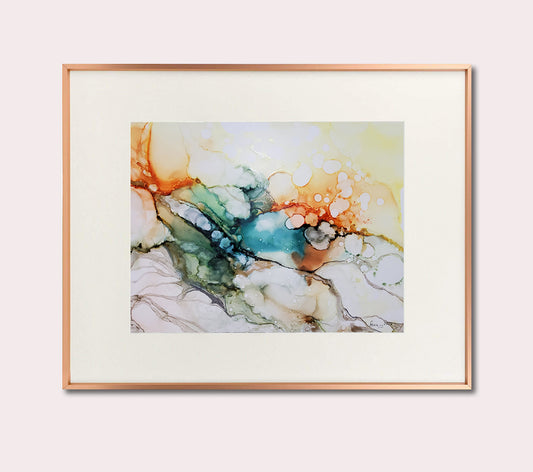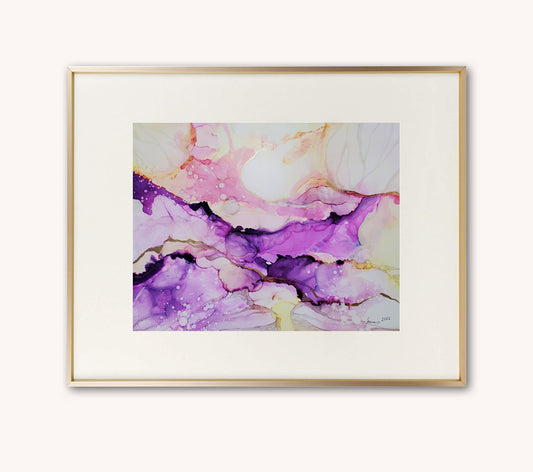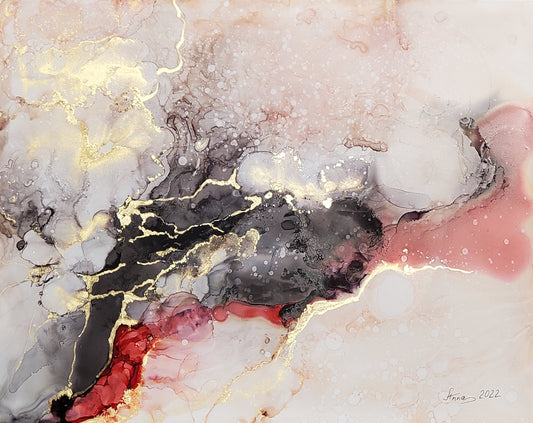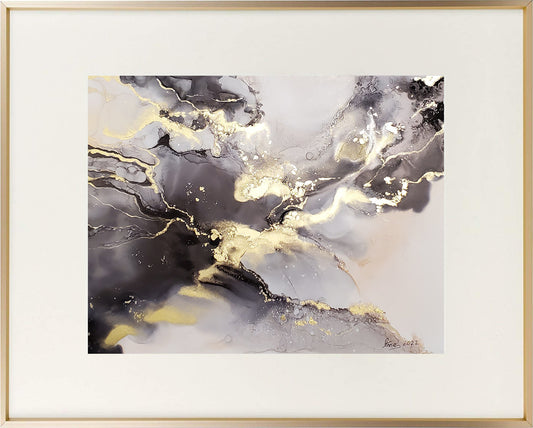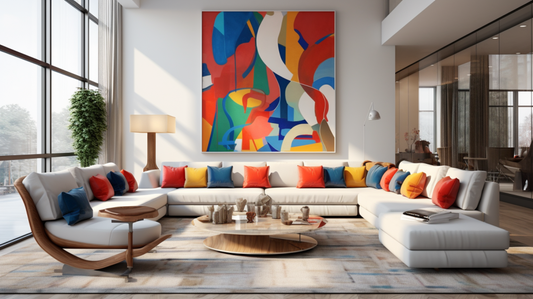
MURRAY FREDERICKS: BLAZE
Nature has long been a source of inspiration for artists, providing a wealth of subject matter and aesthetic beauty. While realistic depictions of nature have been a staple of art for centuries, the natural world has also been a driving force behind the development of abstract art. In this post, we'll explore the influence of nature on abstract art, and how artists have drawn inspiration from the organic shapes, colors, and textures found in the natural world.
Early Abstract Art and Nature
The roots of abstract art can be traced back to the late 19th and early 20th centuries, when artists began to move away from traditional representational art and experiment with new forms of expression. During this time, the natural world played a significant role in the development of abstract art.
One of the pioneers of abstract art was Wassily Kandinsky, who saw art as a means of expressing the spiritual. In his book, "Concerning the Spiritual in Art," Kandinsky wrote about the importance of nature in his work, describing how he saw nature as a "powerful force that could awaken the emotions and inspire the imagination." Kandinsky's use of vibrant, organic shapes and colors in his abstract compositions reflects this connection to nature.
Another early abstract artist, Piet Mondrian, was also inspired by the natural world. Mondrian's early paintings featured landscapes and natural forms, and he later translated these shapes into the abstract, geometric compositions for which he is best known. Mondrian's use of straight lines, primary colors, and asymmetrical balance was influenced by the organic shapes and patterns found in nature.
Abstract Expressionism and Nature
In the mid-20th century, abstract art took a new turn with the emergence of the Abstract Expressionist movement. This movement was characterized by large-scale, gestural paintings that emphasized the physical act of painting and the expressive potential of color and form.
Many of the Abstract Expressionists drew inspiration from the natural world, particularly the landscapes of the American West. Jackson Pollock, for example, created his signature drip paintings by flinging and pouring paint onto the canvas, creating intricate, web-like patterns that suggest the chaotic energy of nature. Similarly, Mark Rothko's color-field paintings, with their luminous, atmospheric fields of color, evoke the vast, open spaces of the Western landscape.
Contemporary Abstract Art and Nature
Today, artists continue to draw inspiration from the natural world in their abstract work. Some artists focus on the patterns and textures found in the natural environment, while others create abstract compositions that suggest the organic forms of plants and animals.
For example, the work of artist and photographer Murray Fredericks explores the intersection of abstract art and the natural landscape. Fredericks takes aerial photographs of remote salt lakes in Australia, which he then manipulates and abstracts in the studio. The resulting images are mesmerizing, with swirling patterns and vivid colors that suggest the beauty and complexity of the natural world.
Similarly, the work of artist Sarah Winkler explores the connections between the body and the natural environment. Winkler creates abstract compositions that suggest the shapes and textures of organic matter, using materials such as clay, fiber, and wax to create tactile, three-dimensional forms. Her work suggests the fragility and resilience of nature, as well as our own connection to the natural world.
Conclusion
Nature has been a powerful influence on abstract art throughout its history, providing artists with a rich source of inspiration and a means of expressing the spiritual and emotional aspects of the human experience. Whether through organic shapes and colors, gestural brushstrokes, or abstracted landscapes, the natural world continues to inspire and inform abstract artists today.
Intrigued by the fascinating world of abstract art? Your artistic journey doesn't have to end here. Explore a mesmerizing collection of captivating and modern abstract artworks by visiting our Abstract Art Collection and Shop. Anna Manukyan's gallery is a treasure trove of creativity, where you can not only see but also acquire unique pieces that resonate with your aesthetic sensibilities. Dive into a realm of imagination, emotion, and innovation as you discover the transformative power of abstract art. Don't miss the opportunity to enrich your surroundings with these thought-provoking creations. Start your exploration now and let the art on this page inspire your soul.


